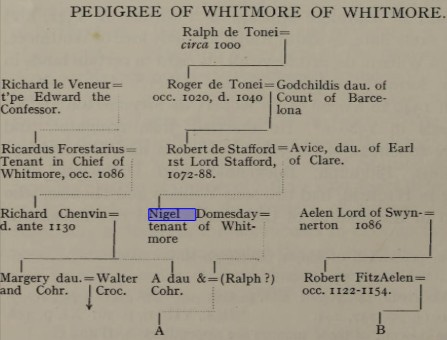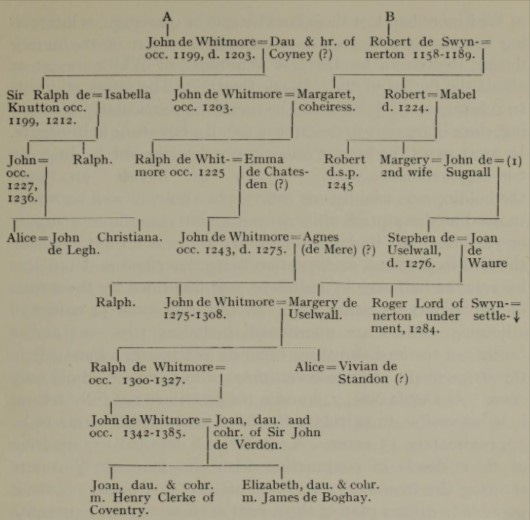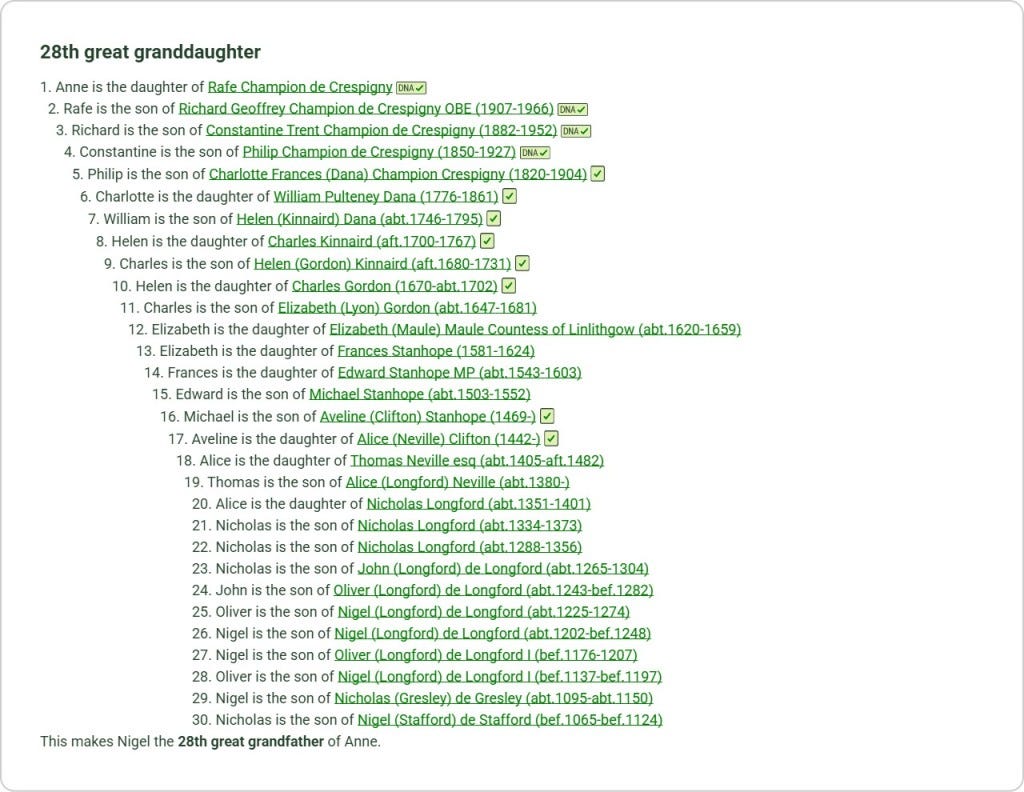Everyone knows about 1066 and all that: the uninvited arrival of William the Conqueror in Hastings, and Harold with the arrow in his eye.
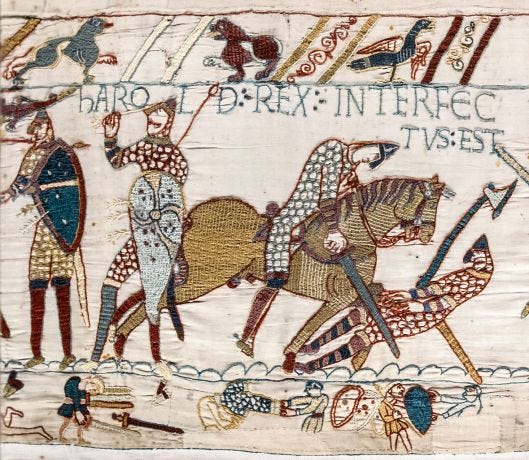
Some people—those who were listening in their History classes—also remember the ‘Domesday Book‘ of 1086 and its purpose. To put an end to twenty year’s squabbling among the conquerors about who got what, William ordered a comprehensive survey of English landholdings, with an eye on their taxable value, all of the information carefully recorded in a single document, the Domesday book. The book was so called because its decisions were unalterable, like those of the Last Judgment, and its sentence could not be quashed
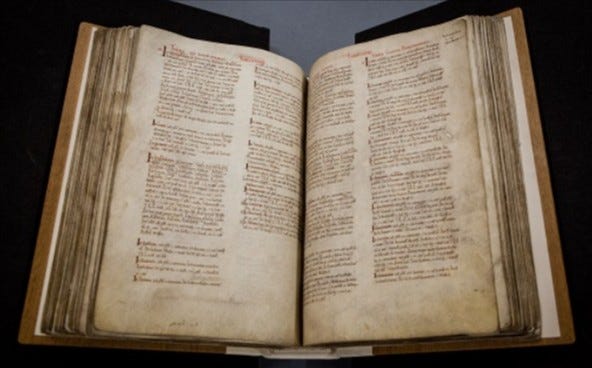
The ‘Domesday landholder’ held title according to the Book. As a 28th grand daughter of Nigel de Stafford through his son William de Gresley, I am descended from the Domesday landholder of Whitmore (as in Whitmore Hall, which I’ve written about in previous posts).
So far so good, but it gets complicated.
In 1086 the Domesday Survey showed “Nigellus de Stafford” held 9 manors and 2 sokes in Derbyshire and that “Nigellus” held two more manors in Derbyshire, 13 holdings in Staffordshire, 4 holdings in Leicestershire, and 1 holding in Warwickshire. There were other holdings in the name of “Nigellus” (e.g., in Yorkshire) that probably belonged to a different Nigel, but the ones in Staffordshire and Leicestershire probably belong to the one man because they form a group in a district within about six miles of Burton-on-Trent to the west, south-west, and south.
The Open Domesday project records Nigel of Stafford as a landowner not associated with any places before the Conquest; but associated with fifty six places after the Conquest. There were fifteen places he held as tenant-in-chief and forty one places where he was the immediate lord over the peasants after the Conquest, and paid tax to a tenant-in-chief.
For Whitmore Nigel (of Stafford) was the Lord and Richard the forester was Tenant-in-chief in 1086.
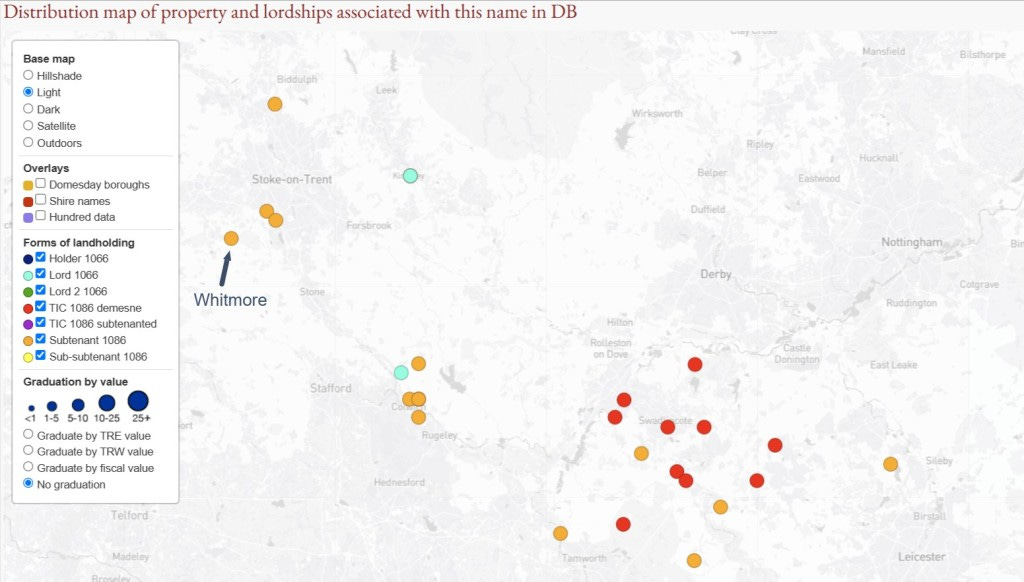
My great uncle J.G. Cavenagh-Mainwaring, Gordon, wrote a family history of Whitmore published in 1936, Mainwarings of Whitmore. He says of the Domesday Book and Nigel of Stafford:
At the time of the General Survey (20 Conq.), “Ricardus Forestarius” held Whitmore of the King. Nigel (de Stafford), the Gresley ancestor, held under him as mesne tenant.
The actual Domesday record is as follows, with abbreviations extended: — “ Idem R(icardus) ten(et) Witemore et Nigel de eo. Ulfac tenuit, lib(er) homo fuit. Ibi e(st) dimid(ia)hida. Terra e(st) hi car(rucarum), In d(o)m(ini)o e(st) una et 111 vill(an)i et 11 bord(arii) cu(m) 1 car(ruca). Ibi 1 ac(ra) p(ra)ti. Silua 1 leu(va) l(on)g(itudine) dim(idium) lat(itudine). Valet X Sol(idos).”At this time Whitmore was a small village, probably containing six houses, that of the (late ?) Saxon proprietor, Ulfac, with a home farm of 120 acres, and a team of eight oxen; three occupied by villeins, each with possibly two oxen and 30 acres of arable land; and two by smallholders with perhaps an ox apiece and 10 acres of land. There were also 120 acres, which might have been cultivated if another plough had been available; and an acre of meadow, i.e. land upon which hay was cut. It seems likely that the village was situated on the same site as at present, on the banks of a small stream, with the house of the proprietor on one side of it, and those of the villagers on the other. Probably the whole of the western portion of the manor was forest land, roughly estimated at 720 customary acres … [The] Domesday Book was compiled for the purposes of taxation, and was concerned only with arable land.
… the expression in Domesday that a tenant had held the land T.R.E. may have meant nothing more, in the majority of cases, than that he had been superseded in the lordship or manor by the new tenant; so, possibly Ulfac may have continued to hold Whitmore as arriere tenant under Nigel, until, failing direct male descendants of the former, a descendant of the latter, in the junior line, who, as will be shown later, had probably married one of the co-heiresses of the tenant in capite, was enfeoffed in the manor, and took up his residence there.
… though Nigel is Domesday tenant of this estate, it is traceable to Richard Forester’s Knutton descendants and not to descendants of Nigel. But it is possible that Ralph de Knutton was descended from both Richard Forester and Nigel; if this were so, then the most probable solution seems to be that Margery, the daughter of Richard Chenvin who married Walter Croc, was not sole heiress of her father, but had a sister and co-heiress who married a son of Nigel, who inherited Clayton, Hanford and Whitmore and that she inherited Knutton, Dimesdale and Hanchurch. Judging from the subsequent alternate reiteration of the names Ralph and John in the pedigree, he would have been called Ralph after one of Nigel’s brothers, an ancestor of Lord Clifford. The exact nature of the tenures of these lordships is somewhat obscure, and in some cases is complicated by their subsequent relation to Newcastle-under-Lyme.
In 37 Eliz. (1595), Edward Manwaringe, then mesne Lord of the Manor of Whitmore, probably seventeenth in descent from Richard Forester, the tenant in capite, and sixteenth in descent from Nigel, the mesne tenant of the same manor in 1086 …My great uncle Gordon then produces a family tree (on pages 24-5) based on his speculation of a daughter of Richard the Forester (Chenvin) married a son of Nigel and that son was possibly called Ralph and from that couple the de Whitmore’s inherited the manor and several generations later a daughter of the de Whitmore family married a de Boughey. A descendant of the de Boughey family married Edward Mainwaring.
The connection is speculative although perfectly possible for no records that survive to verify the connection. The tree is based in part on the fact that the manor of Whitmore was never sold and only passed by inheritance.
Sources seem much more confident and consistent that Nigel de Stafford was the primogenitor of the Gresley and Longford families. The evidence consists primarily of
There are a number of original sources that refer to William de Gresley or Nicholas de Gresley as the son of Nigel (although no original sources expressly refer to either as the son of “Nigel de Stafford”)
A large portion of Nigel de Stafford’s Domesday holdings continued on in the family of his eldest son, William
I am the 28th grand daughter of Nigel through his son William de Gresley. I am also descended from Nigel through his son Nicholas.
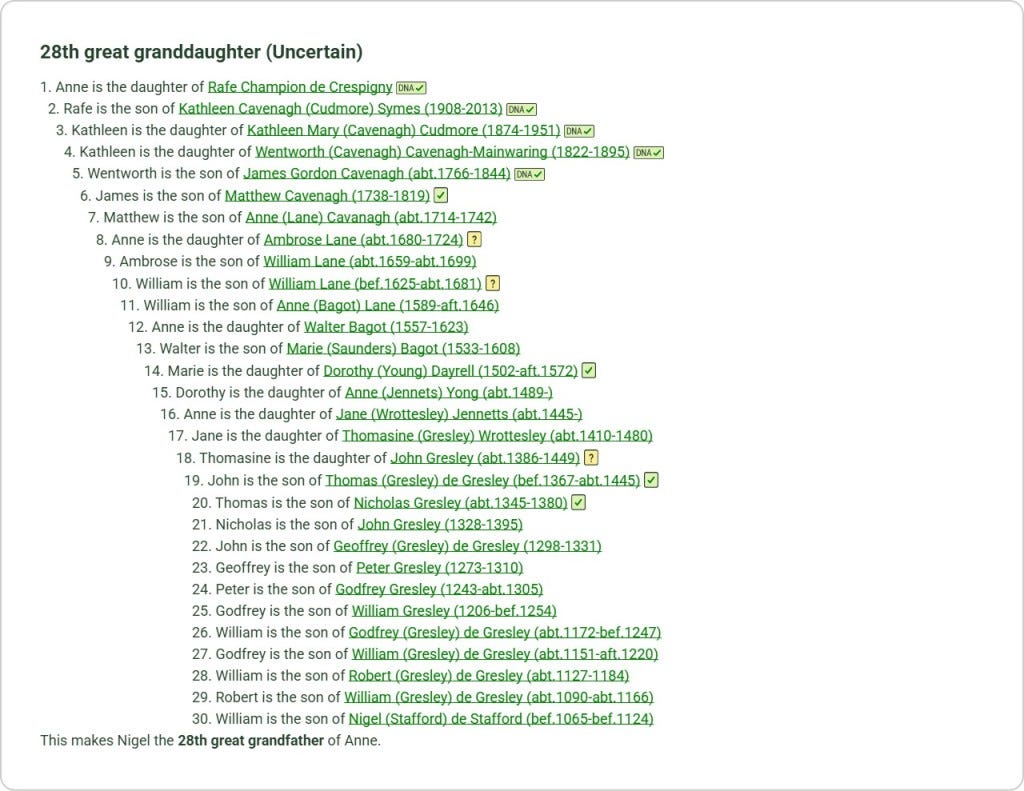
The lack of documentation for the family relationships that almost certainly existed more than 900 years ago is not surprising. The lack of records does not mean the connections did not exist, just that we are not able to prove them.
Related posts
Wikitree: Nigel de Stafford (bef.1065-bef.1124)
This post first published at https://anneyoungau.wordpress.com/2025/04/16/n-is-for-nigel/



